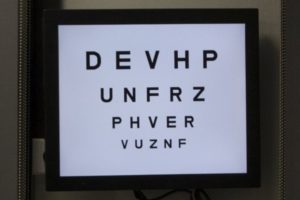The Best Strategy To Use For Adult & Paediatric Eye Surgery
Table of ContentsAdult Cataract for DummiesNot known Details About Paediatric Ophthalmology The Definitive Guide for Eye ChecksThe Basic Principles Of Eye Exam The Definitive Guide for Eye Exam
Eye doctors are clinical doctors that focus on the diagnosis and also therapy of eye and also vision issues. What is the distinction between an ophthalmologist and also an eye doctor, then? What regarding lens? These 3 types of eye treatment specialists have instead similar-sounding names as well as overlapping job summaries (AMBLYOPIA). It can be perplexing at very first look.They can not offer eye exams, compose prescriptions, or detect or deal with eye problems. can analyze your eyes, test your vision, prescribe glasses or calls, and also diagnose and treat many eye problems and illness. They are not clinical physicians or cosmetic surgeons but can suggest particular eye-related medications. Provide eye examinations, vision screening, and prescriptions for glasses or call lenses.
They can execute eye surgical treatment and provide follow-up treatment. When providing an extensive eye exam, an ophthalmologist will examine your vision and, if required, find your eyeglass/contact lens prescription. They will certainly test just how your pupils respond to light, examine the positioning of your eyes, as well as make certain the muscular tissues that move your eyes are working effectively.
Examine This Report on Adult & Paediatric Eye Surgery
Eye doctors identify and also deal with injuries, infections, illness, and also disorders of the eye. Treatments can consist of medication taken orally (by mouth) or topically (in the eye), surgical procedure, cryotherapy (freeze treatment), as well as radiation treatment (chemical therapy). Ophthalmologists attend medical college then receive several years of specialty training in the clinical as well as surgical care of the eye.
As they are the only medical specialists that can treat all eye problems, ophthalmologists see a wide range of eye conditions, including: Just how typically should you have an eye exam? What are signs that suggest you may have an eye trouble that requires to be examined by an ophthalmologist? The American Academy of Ophthalmology suggests: As youngsters's eyes are expanding and also transforming quickly, they need to receive a vision testing.
Grownups who have healthy and balanced eyes as well as exceptional vision ought to have four thorough eye exams: one in their 20s, 2 in their 30s, and one at age 40. These appointments may enable the eye doctor to capture an eye condition or vision changes at an early stage. By the time you notice signs, you might currently have some vision loss.
Not known Factual Statements About Adult & Paediatric Eye Surgery
Individuals who are at a greater threat of eye disease might need to get an eye test extra typically (https://zenwriting.net/drc4r0l1n3ctt/amblyopia-fundamentals-explained). After age 65, your eyes ought to be examined every one to two Full Report years.
An eye doctor is a clinical specialist that specializes in eye care. They are accredited to detect and treat conditions that impact the eye.
An ophthalmologist can: carry out eye examsdiagnose and also deal with eye disorders and also diseasesperform eye surgeryprescribe and also fit eyeglasses and also call lenses, According to the American College of Surgeons, they are the only medical care practitioners that have obtained training to diagnose and also deal with all conditions that affect a person's eyes as well as vision. To qualify as an eye doctor in the USA, a person should complete roughly 12 years of education and learning and also training - https://delirious-fog-c99.notion.site/Conjunctivitis-for-Beginners-fbfeeaed02794300ac4ae4d4cc559eab.
The Best Strategy To Use For Adult & Paediatric Eye Surgery
/what-is-an-ophthalmologist-1736298-v1-3678b43002124010891358a2f8c97d13.png)

An eye doctor might select to complete a fellowship to come to be a subspecialist in one location of eye wellness. This training prepares them to deal with more certain or complicated conditions in different parts of the eye or a particular team of individuals. Subspecialists can focus on: This focuses on cataract surgery, corneal hair transplant, as well as refractive eye surgery. https://forum.gov.bm/en/profile/joe-etheridge.: This location concentrates on conditions that impact the retina as well as vitreous.
This area concentrates on medical and also surgical treatment of conditions that create damages to the optic nerve. This subspecialty concentrates on eye conditions that impact children. This entails discovering how to perform operations, including getting rid of lumps and also repairing bony fractures. This area connects to the neurological problems that consist of aesthetic indications.

Adult Strabismus Fundamentals Explained
The ophthalmologist will ask the person concerning their clinical history, including that of relative. They will certainly after that start checking and also analyzing the eyes. https://tinyurl.com/4y3mwsmd. This could consist of: The eye doctor will ask an individual to stand 20 feet away from a graph, cover one eye, and also state what they can see.
This aids the medical professional comprehend just how sharp a person's vision is. Aesthetic field assessments include an ophthalmologist measuring just how much vision an individual has in either eye, whether they have any type of dead spots or any kind of other problems that might influence an individual's sight.Tests include: fight aesthetic area testautomated fixed perimetry testkinetic aesthetic area testfrequency doubling perimetryelectroretinography, Amsler grid As well much pressure can harm the optic nerve as well as often cause glaucoma.
There are various kinds of tonometry, including: The ophthalmologist first numbs the eyes before touching the front of them with a handheld tool that glows blue. This technique is much more accurate than various other approaches, such as non-contact tonometry. This examination makes use of a puff of air to determine the stress. Although this technique may be much less exact, it does not call for the use of numbing drops.